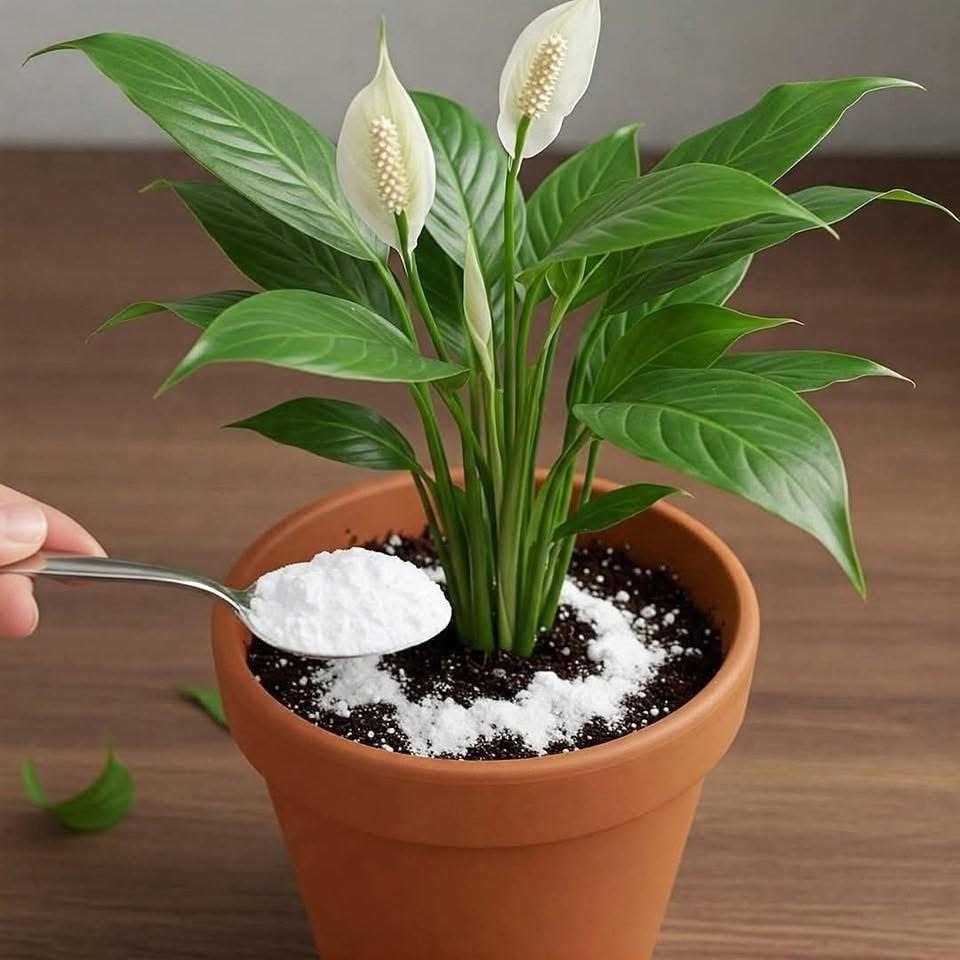Discovering the Elegance of the Peace Lily: A Guide to Growing and Caring for Your Spathiphyllum
Peace lilies (Spathiphyllum) are among the most beloved indoor plants due to their striking white blooms, glossy green leaves, and air-purifying qualities. With their minimal care requirements, peace lilies are perfect for those who want to add a touch of elegance to their home or office without the stress of high-maintenance gardening.
Native to tropical America, peace lilies thrive in warm, humid environments and can be easily grown indoors. This evergreen plant stands out not only for its beauty but also for its ability to clean the air by filtering toxins like benzene, formaldehyde, and trichloroethylene. Whether you’re a seasoned plant enthusiast or a beginner, peace lilies are an excellent choice for enhancing the ambiance of your home. Let’s dive into how you can properly care for your peace lily, ensuring that it thrives for years to come.
What Makes Peace Lilies Special?
At first glance, the peace lily’s distinctive appearance might make it seem like a complicated plant to care for, but this couldn’t be further from the truth. The true “flower” of the peace lily is a small spadix surrounded by a large white spathe, which is actually a modified leaf. The white “flower” is really a protective sheath that wraps around the delicate spadix, making the plant both elegant and unique.
One of the most amazing features of the peace lily is its air-purifying abilities. According to NASA’s Clean Air Study, peace lilies can filter out harmful pollutants in the air, making them an excellent addition to any indoor space. They also have an ability to adapt to a variety of lighting and temperature conditions, though they do have some preferences that, when met, will help them bloom beautifully and stay healthy.
Essential Tips to Keep Your Peace Lily Blooming
If you’ve ever purchased a peace lily only for it to stop blooming soon after, you’re not alone. This is a common issue among new plant owners. While the plant may initially look vibrant and beautiful, after some time, it may fail to re-bloom. The primary cause of this is often a lack of essential nutrients, particularly if the plant hasn’t been repotted or given the right kind of care since purchase.
Luckily, it’s easy to correct these issues with a few simple adjustments. Here are some key tips that will not only keep your peace lily healthy but also encourage it to bloom regularly:
1.
Use the Right Fertilizer
Peace lilies require consistent nutrients to thrive. While you can buy commercial fertilizers, a natural homemade fertilizer is an excellent alternative. One of the best ways to improve your plant’s growth is by using aloe vera-based liquid fertilizer. Aloe vera is rich in vitamins, minerals, and enzymes that promote plant health and can stimulate flowering.
How to Make Homemade Aloe Vera Fertilizer:
Creating your own liquid fertilizer with aloe vera is simple and effective. Here’s how to make it:
Ingredients:
1 fresh aloe vera leaf
2 to 3 gallons of water
Instructions:
Start by cutting the aloe vera leaf, being careful to extract the gel inside. If you don’t want to use a blender, you can simply extract the gel by hand.
Mix the gel with water in a large container. If using a blender, you can blend the mixture for a smoother consistency.
Strain the mixture if desired, especially if using a blender.
Use this homemade aloe vera solution to water your plants bi-weekly.
This bi-weekly application will enrich your peace lily’s soil and encourage healthier growth and more vibrant flowers.
2.
Temperature and Light Conditions Matter
Peace lilies are relatively forgiving when it comes to their environmental needs, but there are still optimal conditions you should aim for:
Temperature: Peace lilies thrive in temperatures between 18°C (64°F) and 25°C (77°F).
They are quite sensitive to cold and should not be exposed to temperatures below 15°C (59°F), as this can stunt their growth or cause damage to the plant.
While they can tolerate warmer temperatures (up to 30°C or 86°F), they perform best in moderate heat.
Light: Peace lilies prefer bright, indirect light. They can adapt to lower light levels, but they may not flower as readily.
Direct sunlight can scorch their leaves, so it’s essential to place them in a spot where they receive filtered light. A windowsill with sheer curtains or a spot a few feet away from a bright window works best.
3.
Soil and Drainage Are Key
Like many houseplants, peace lilies prefer well-draining soil. Choosing the right soil mix is essential to ensure healthy roots.
A slightly acidic soil mixture works best, and you should look for a mix that contains peat, bark flakes, and sand.
Additionally, it’s vital to use a pot with drainage holes to prevent water from pooling at the bottom, as peace lilies do not like to sit in water.
Stagnant water can cause root rot and other fungal issues.
If you’re unsure about the soil’s pH, aim for a slightly acidic to neutral range, between 5.8 and 6.5.
4.
Avoiding Common Care Mistakes
Peace lilies are relatively easy to care for, but they do have specific needs that, if overlooked, can lead to problems. Here are a few things to keep in mind:
Watering: Overwatering is a common mistake with peace lilies. While they like humidity, they don’t thrive in soggy soil.
Always let the top inch of the soil dry out before watering again. It’s better to underwater than overwater, as peace lilies are more tolerant of being a little dry than sitting in waterlogged soil.
Humidity: Peace lilies enjoy humid environments. If your home is dry, especially during winter, you may need to increase the humidity around your plant.
Placing the pot on a tray of pebbles filled with water can help, or you can use a room humidifier.
Cleaning: The glossy leaves of a peace lily can accumulate dust over time, which can affect its ability to photosynthesize.
Wipe the leaves gently with a damp cloth every month to keep them clean and shiny.
Additional Tips for Keeping Peace Lilies Healthy
5.
Repotting Your Peace Lily
If your peace lily outgrows its pot, you should repot it every 1-2 years to provide fresh soil and give the roots more space.
Spring is the best time to repot the plant, as it will allow the roots to adjust to the new environment before the growing season.
When repotting, choose a pot that is just one size larger than the current one. Too large of a pot can lead to overwatering issues, as the soil will retain excess moisture.
How to Store and Care for Peace Lilies in Winter
Peace lilies don’t require much attention in winter, but keeping them in a spot with enough light and moderate warmth is crucial.
If your home is particularly dry during the colder months, consider placing a humidifier nearby to help keep the plant’s environment comfortable.
Conclusion: Bringing Peace and Beauty Into Your Home
Peace lilies are low-maintenance, beautiful, and versatile indoor plants. By following these simple care tips and using natural homemade fertilizers, you can keep your peace lily vibrant and thriving for years.
Not only will your peace lily improve the look of your home, but it will also help purify the air, making your indoor space more comfortable and healthier.
By providing the right environment, nutrients, and care, you’ll enjoy the elegance of the peace lily and its signature white blooms season after season.
Whether you are a seasoned gardener or just starting your plant collection, a peace lily is an excellent choice for your home or office.
This guide to caring for your peace lily should help you maintain a healthy, flourishing plant. Would you like any further tips or help on other plants?
-
Carrot sheet cake
Introduction Carrot sheet cake is a delightful dessert that’s perfect for any occasion. With its moist texture, rich flavor, and comforting spices, this cake has a place in many kitchens. … Read more
-
Garlic Butter Beef Pasta
Few dinners hit the sweet spot between comfort, flavor, and ease quite like Garlic Butter Beef Pasta. This dish is rich, creamy, and deeply satisfying, yet simple enough to make on … Read more
-
apple pie biscuits
Here’s a more detailed version of the Apple Pie Biscuits recipe with a total of 17 paragraphs, covering the entire process from introduction to conclusion: Introduction: Apple pie biscuits are … Read more



